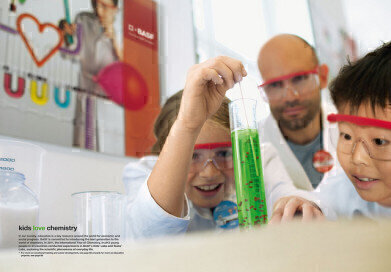News
What Are the 12 Principles of Green Chemistry?
Dec 29 2015
Chemistry plays a key role in pioneering the modern developments of our time. With the world developing an increasing awareness for the need to become more eco-friendly, a pair of scientists decided it was time for chemistry to ‘go green’ too. Created by Paul Anastas and John Warner, the 12 Principles of Green Chemistry now serve as an outline for how to minimise the environmental and health impacts of chemical production.
Prevention
This principle asserts that it’s far more eco-friendly to prevent waste, as opposed to cleaning it up after it’s already been created.
Atom Economy
In a bid to further reduce waste, the concept of an Atom Economy suggests that all synthetic methods should be designed to incorporate as many materials as possible into the final product.
Less Hazardous Chemical Syntheses
The chemical industry wreaks havoc on the environment. The principle of Less Hazardous Chemical Syntheses exists to encourage manufacturers to create substances that are less toxic to humans and the environment.
Designing Safer Chemicals
While chemicals should still retain their desired function, manufacturers should place an emphasis on minimising toxicity.
Safer Solvents and Auxiliaries
Auxiliary substances such as solvents and separation agents should be eliminated where possible, and non-toxic when used.
Design for Energy Efficiency
Manufacturers should be aware of the energy requirements of chemical production, and take steps to minimise environmental and economic impacts.
Use of Renewable Feedstocks
Rather than use depleting feedstocks, raw materials should be renewable.
Reduce Derivatives
In a bid to further reduce waste, the unnecessary derivatisation should be minimised, and eliminated completely where possible.
Catalysis
As a general rule, all catalytic reagents should be prioritised over stoichiometric reagents.
Design for Degradation
When designing chemical products engineers should ensure that at the end of their lifecycle they break down into innocuous degradation products that don’t harm the environment.
Real-time analysis for Pollution Prevention
Researchers should focus on developing analytical methodologies in order to launch real-time, in-process monitoring that prevents the formation of toxic substances.
Inherently Safer Chemistry for Accident Prevention
When choosing substances for use in chemical processes scientists should choose materials that minimise the risk of chemical accidents.
For insight into the 12 Principles of Green Chemistry in practice, ‘Isolation and Identification of Green Pigments from Waste Pineapple Peels’ is a must read article. It describes the use of Green Chemistry Principles when applied to the extraction and isolation of chlorophyll biodegradation products derived from pineapple peel waste.
Image via Flickr Creative Commons. Photo credits: BASF - we create chemistry
Digital Edition
Lab Asia Dec 2025
December 2025
Chromatography Articles- Cutting-edge sample preparation tools help laboratories to stay ahead of the curveMass Spectrometry & Spectroscopy Articles- Unlocking the complexity of metabolomics: Pushi...
View all digital editions
Events
Jan 21 2026 Tokyo, Japan
Jan 28 2026 Tokyo, Japan
Jan 29 2026 New Delhi, India
Feb 07 2026 Boston, MA, USA
Asia Pharma Expo/Asia Lab Expo
Feb 12 2026 Dhaka, Bangladesh



















